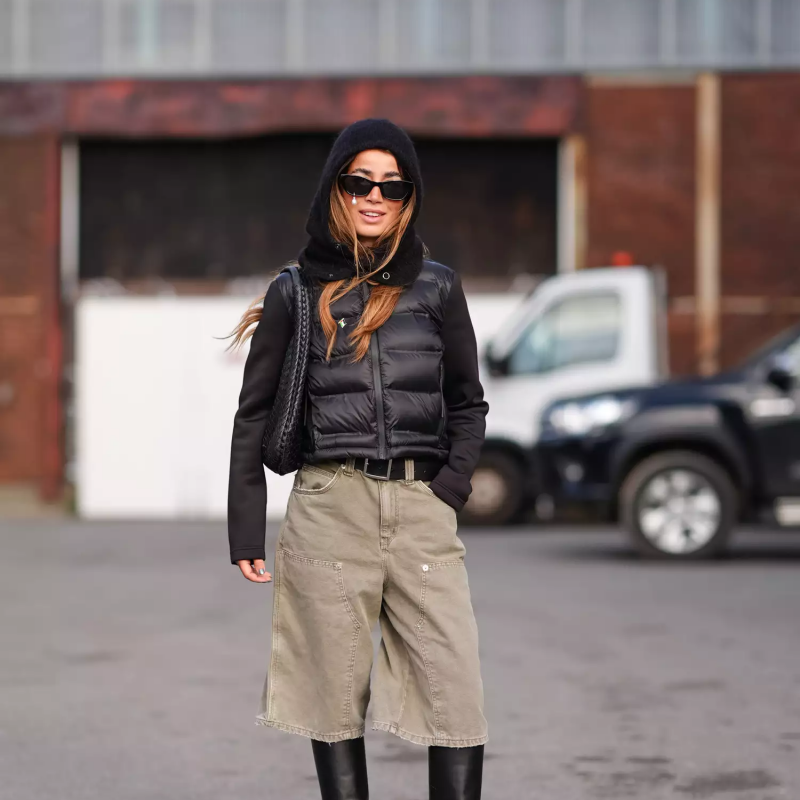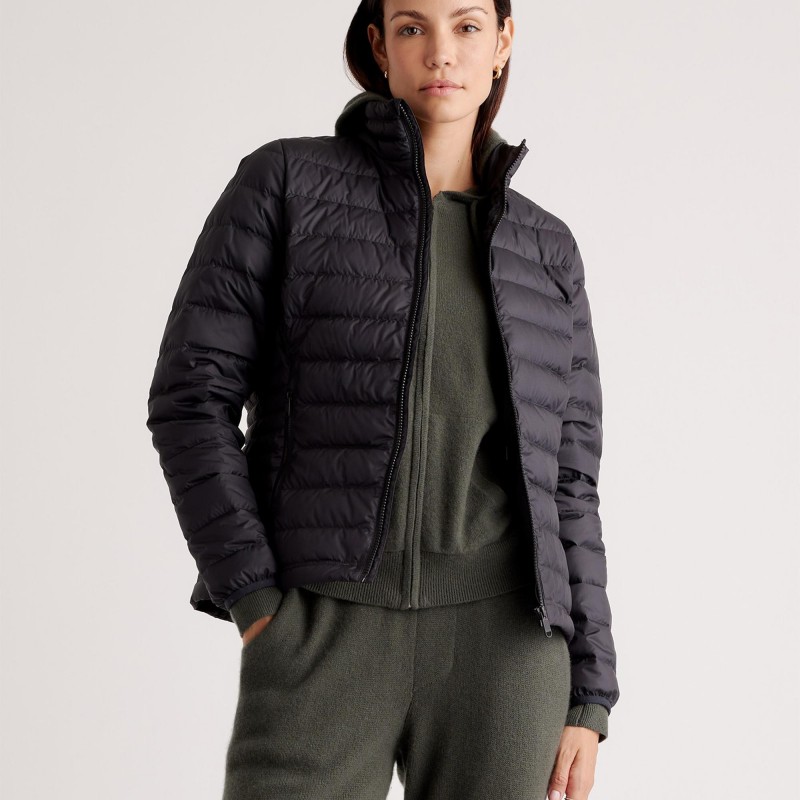Puffer jackets are a winter wardrobe essential, known for their ability to provide warmth without bulk. Initially designed for extreme cold weather conditions, these jackets have become a fashionable choice for many individuals. With their unique quilted construction, lightweight insulation, and water-resistant fabrics, puffer jackets are perfect for battling chilly temperatures. However, with regular wear and exposure to the elements, they inevitably accumulate dirt, moisture, and odors. This begs the question: how to wash a puffer jacket effectively? Washing a puffer jacket isn’t as simple as tossing it in the washing machine; specific care methods must be employed to preserve its insulation and prolong its lifespan. In this comprehensive guide, we will explore everything you need to know about washing a puffer jacket, including the types of materials, pre-washing considerations, step-by-step washing instructions, drying techniques, and tips for proper storage. By the end of this article, you will have all the information necessary to keep your puffer jacket looking great and functioning optimally throughout the winter season.

Understanding the Construction of Puffer Jackets
Before diving into how to wash a puffer jacket, it’s essential to familiarize yourself with the jacket’s construction and materials. Knowing your puffer jacket’s makeup can greatly influence your washing method and effectiveness.
- Insulation Materials: Puffer jackets are typically insulated with either down (natural feathers) or synthetic fibers. Down insulation provides excellent warmth-to-weight ratios, while synthetic alternatives are often preferred for their water resistance and hypoallergenic properties. Understanding the type of insulation can inform you on the most suitable washing methods, as down requires special care to avoid clumping.
- Outer Fabric: The outer shell of a puffer jacket can be made from various materials such as nylon, polyester, or even unique blends that are often treated to be water-resistant. The fabric’s composition affects its durability and cleaning method, so checking the care label is crucial before proceeding with washing.
- Seams and Stitching: Puffer jackets feature quilted stitching to hold the insulation in place and create the characteristic puffy look. Proper maintenance is needed to ensure that these seams do not fray or tear during washing, as damaged seams can lead to insulation loss.
- Lining Material: The interior lining of the jacket may often have its own distinct fabric, which could influence how moisture wicks away and affects comfort. Knowing the lining becomes essential in considering how to wash and care for the overall structure of the jacket.
Understanding these components will help you make informed decisions on how to wash a puffer jacket while ensuring that you maintain its performance and appearance.
Pre-Washing Considerations
Now that you understand the construction of puffer jackets let’s discuss the necessary steps to take before washing your jacket. The goal is to prepare your jacket properly so that washing is effective and safe:
- Read the Care Label: This is one of the most critical steps in the washing process. The care label will provide instructions specific to your jacket’s material, including recommendations for machine washing, hand washing, and drying methods. Following these guidelines will protect your investment.
- Check for Damage: Before washing, inspect your jacket for any signs of damage such as loose threads, frayed seams, or tears. Addressing these issues before washing can prevent further damage. You may wish to repair small tears with fabric glue or a needle and thread beforehand.
- Close Zippers and Fasteners: Make sure to zip up all zippers and fasten any buttons or clasps on your jacket. This helps protect the fabric and stitching from being caught during the wash cycle.
- Empty Pockets: Check all pockets to ensure they are free from items like chapstick or coins that might damage the jacket or get lost in the wash.
- Shake Off Debris: Give your puffer jacket a gentle shake to remove any loose dirt or debris. This simple step can improve the cleaning effectiveness during the washing process.
By taking these pre-washing considerations into account, you set the stage for an effective cleaning process and enhance the longevity of your puffer jacket.
How to Wash a Puffer Jacket: Step-by-Step Instructions
With your pre-washing tasks complete, it’s time to learn how to wash a puffer jacket effectively. Follow these step-by-step instructions for optimal results:
Machine Washing
- Use a Gentle Detergent: Select a mild detergent that is free of bleach and fabric softeners. These additives can degrade the puffer jacket’s insulation and water-resistance properties. Specialized detergents designed for down jackets are a great choice as they help maintain the loft of down insulation.
- Choose the Right Cycle: Place your puffer jacket in the washing machine on a gentle or delicate cycle. Using cold or lukewarm water helps to avoid damaging the insulation while still effectively cleaning the fabric.
- Add Extra Rinse Cycle: Consider running an additional rinse cycle to thoroughly remove any detergent residues. This step is especially beneficial for down jackets, as leftover detergent can clump the insulation fibers over time.
- Include Tennis Balls: For down jackets, adding a couple of clean tennis balls or dryer balls to the washing machine can help keep the down from clumping during the wash. The bouncing effect ensures the insulation remains evenly distributed.
Hand Washing
- Fill a Tub with Water: If you prefer hand washing, fill a bathtub or large sink with cold water. Ensure the basin is large enough to submerge the jacket fully.
- Dilute the Detergent: Mix a small amount of the mild detergent in the water until it’s fully diluted. This prevents detergent pockets from forming on the jacket during washing.
- Gently Submerge and Agitate: Place your puffer jacket in the water and gently agitate it with your hands. Avoid excessive scrubbing or wringing, as this can damage the fabric and insulation.
- Soak and Rinse: Allow the jacket to soak for about 10-15 minutes, then drain the soapy water. Rinse thoroughly with cold water until no detergent remains.
Drying Your Puffer Jacket
After washing, it’s essential to dry your puffer jacket correctly to maintain its integrity and performance. Here’s how to do it properly:
Machine Drying
- Use a Low Heat Setting: Place your puffer jacket in the dryer on a low-heat setting. High heat can damage the insulation and fabric. Select the “air dry” or “fluff” setting if your dryer has one.
- Incorporate Tennis Balls Again: Just like when washing, adding a few clean tennis balls or dryer balls into the dryer can help to fluff the insulation as it dries. This process prevents clumping while ensuring an even distribution of down or synthetic fibers.
- Check Regularly: Periodically check on your jacket during the drying process. Make sure it’s drying evenly and thoroughly. If necessary, remove the jacket and give it a gentle shake to help redistribute the insulation.
- Complete Drying: It may take a few cycles to fully dry, especially for down jackets. Ensure there is no dampness left before taking it out; moisture can lead to mold and mildew, damaging the jacket.

Air Drying
- Lay Flat or Hang: If you prefer not to use a dryer, air drying is an option. Lay the puffer jacket flat on a clean, dry surface, like a drying rack or a towel. Alternatively, you can hang it up to dry—just ensure it’s done in an area with good air circulation.
- Avoid Direct Sunlight: When air drying, keep the jacket out of direct sunlight to prevent fading and degradation of materials. Choose a shaded area instead.
- Fluff Occasionally: As the jacket dries, periodically fluff it to redistribute insulation and ensure that it dries evenly.
By following these drying instructions, you can maintain the structure and appearance of your puffer jacket, enhancing its longevity.
Storing Your Puffer Jacket
Once your puffer jacket is clean and dry, proper storage is crucial to ensure it remains in optimal condition. Here are some tips for storing your puffer jacket effectively:
- Use a Wide Hanger: To avoid distortion of its shape, hang your puffer jacket on a wide, padded hanger. This will help maintain its structure and prevent creases from forming.
- Avoid Compression: Storing your jacket in a cramped space or compressing it with other garments can lead to permanent creases and affect its loft. Allow enough space in your closet to keep it in good shape.
- Store in a Cool, Dry Place: Choose a cool and dry area away from direct sunlight for storage. Heat and humidity can harm the jacket’s fabric and insulation over time.
- Use a Garment Bag: If you have limited space and want to keep your puffer jacket clean and protected from dust, consider using a breathable garment bag. Avoid plastic bags, as they can trap moisture.
- Periodic Inspections: Check your stored jacket periodically to ensure it remains in good condition. Look for signs of damage or degradation, particularly from moths or pests.
Following these storage practices helps you protect your investment and keeps your puffer jacket ready for your next winter adventure.
Benefits of Owning a Puffer Jacket
Beyond the stylish look, owning a puffer jacket brings several benefits that make it a worthwhile addition to your winter wardrobe:
- Exceptional Warmth: Puffer jackets are designed for insulation, with their quilted structure creating pockets of air that trap heat. This unique construction provides reliable warmth without bulk.
- Lightweight Design: Unlike some winter jackets that can feel heavy and cumbersome, puffer jackets are typically lightweight, giving you the freedom of movement while still keeping you cozy.
- Weather Resistance: Many puffer jackets come with water-resistant or windproof materials, making them ideal for fluctuating winter weather conditions. This versatility allows you to face rain or snow without fear.
- Stylish Options: Puffer jackets are available in various colors, patterns, and styles, catering to diverse tastes. Whether you’re aiming for a sleek urban look or a more playful outfit, there’s a puffer jacket to suit your fashion preferences.
- Easy Maintenance: With the right washing and care practices, puffer jackets require relatively low maintenance compared to other outerwear options. Their durability ensures they can withstand regular use without losing their appeal.
- Eco-Friendly Choices: Many brands today focus on sustainability, offering puffer jackets made from recycled materials or environmentally-conscious production processes. Choosing such options can align with eco-friendly values.
By recognizing these benefits, you can appreciate the practicality and functionality of owning a puffer jacket, ultimately making them an increasingly popular choice during the colder months.

Conclusion
In conclusion, understanding how to wash a puffer jacket is crucial for maintaining its performance, appearance, and longevity. From the rich history and unique characteristics of this iconic winter garment to pre-washing considerations and step-by-step washing and drying instructions, you’ve now equipped yourself with the knowledge needed to keep your puffer jacket in top condition. Additionally, by following proper storage and care practices, you ensure that your jacket stands the test of time, serving you well through many winter seasons.
Embracing the benefits of a puffer jacket means investing in a stylish, functional piece of outerwear that provides warmth, comfort, and resilience against cold weather elements. As you elevate your winter wardrobe with this must-have garment, don’t forget to apply the recommended care techniques to enjoy its features to the fullest. With a little effort, your puffer jacket can continue to look great and keep you warm for years to come.

